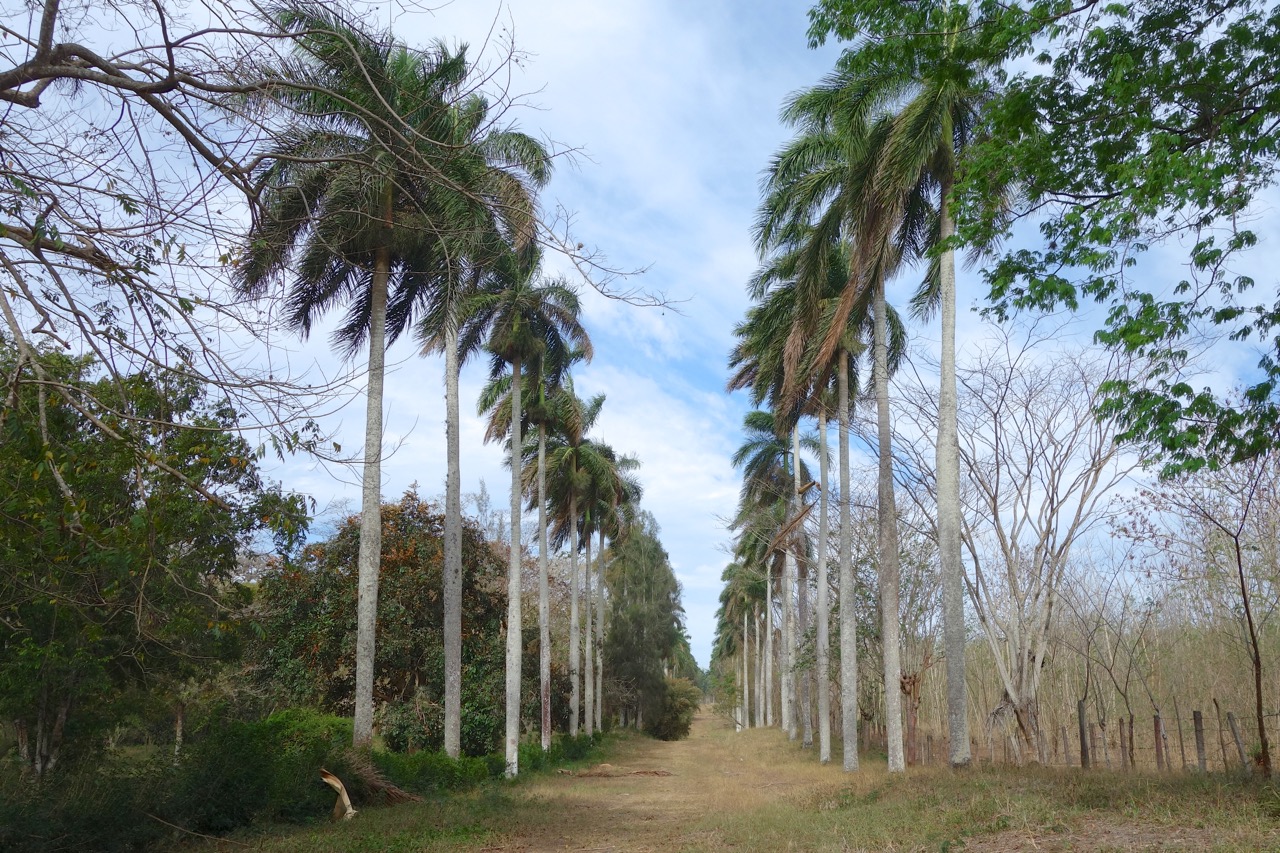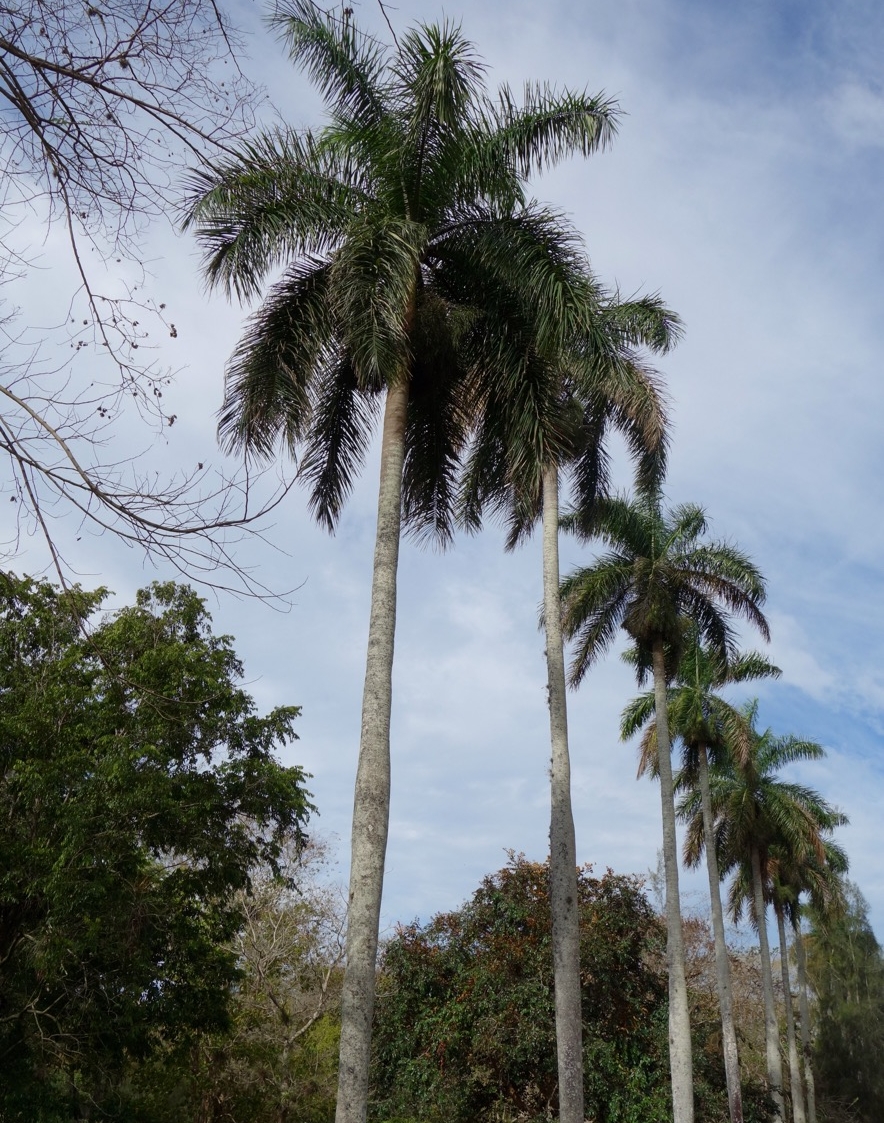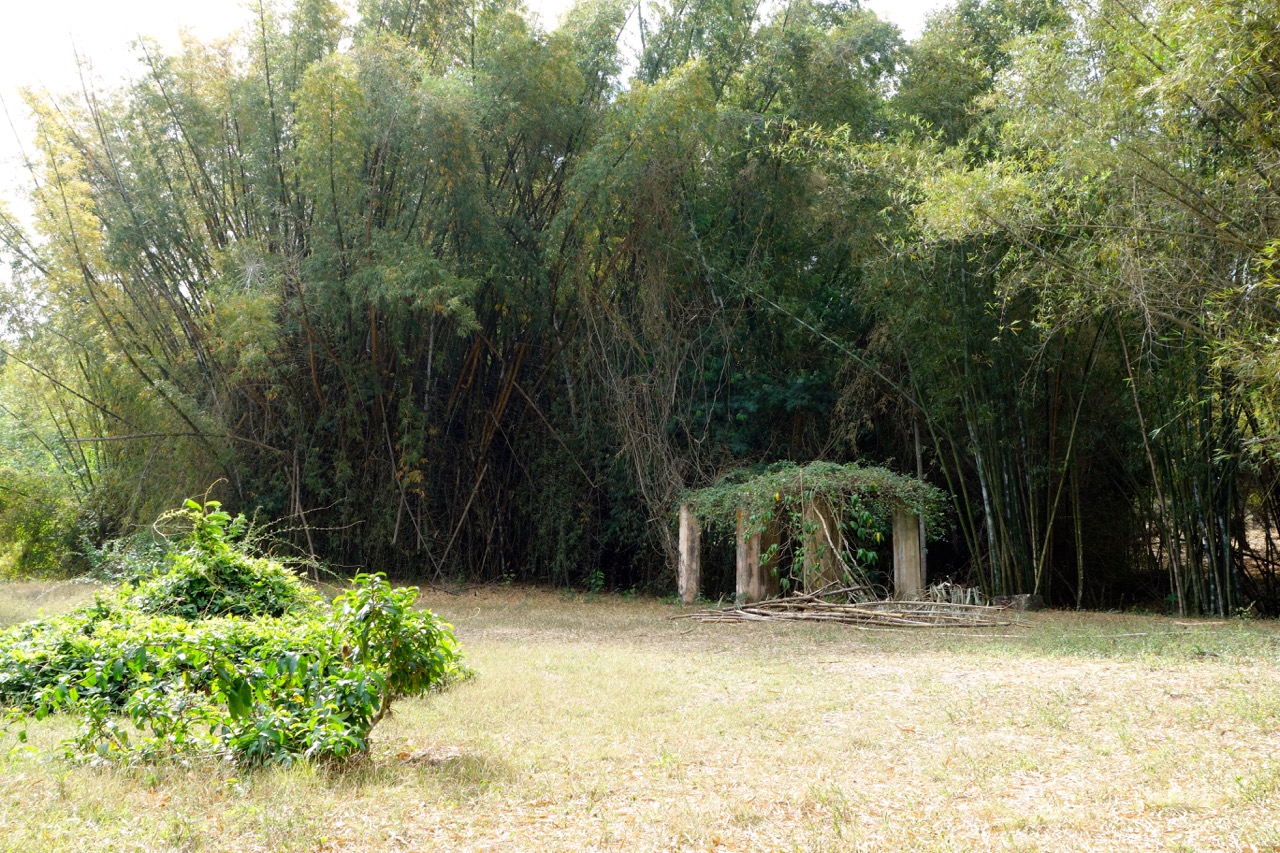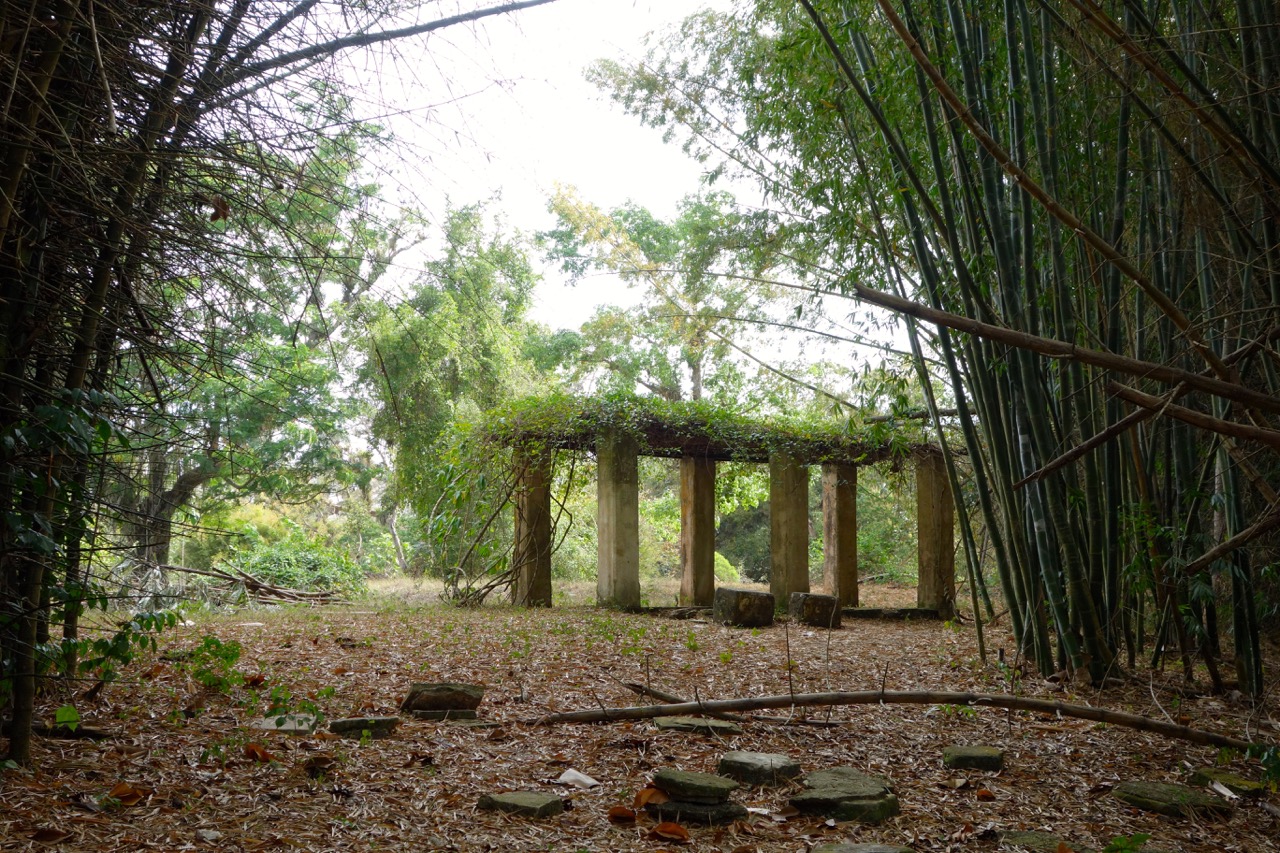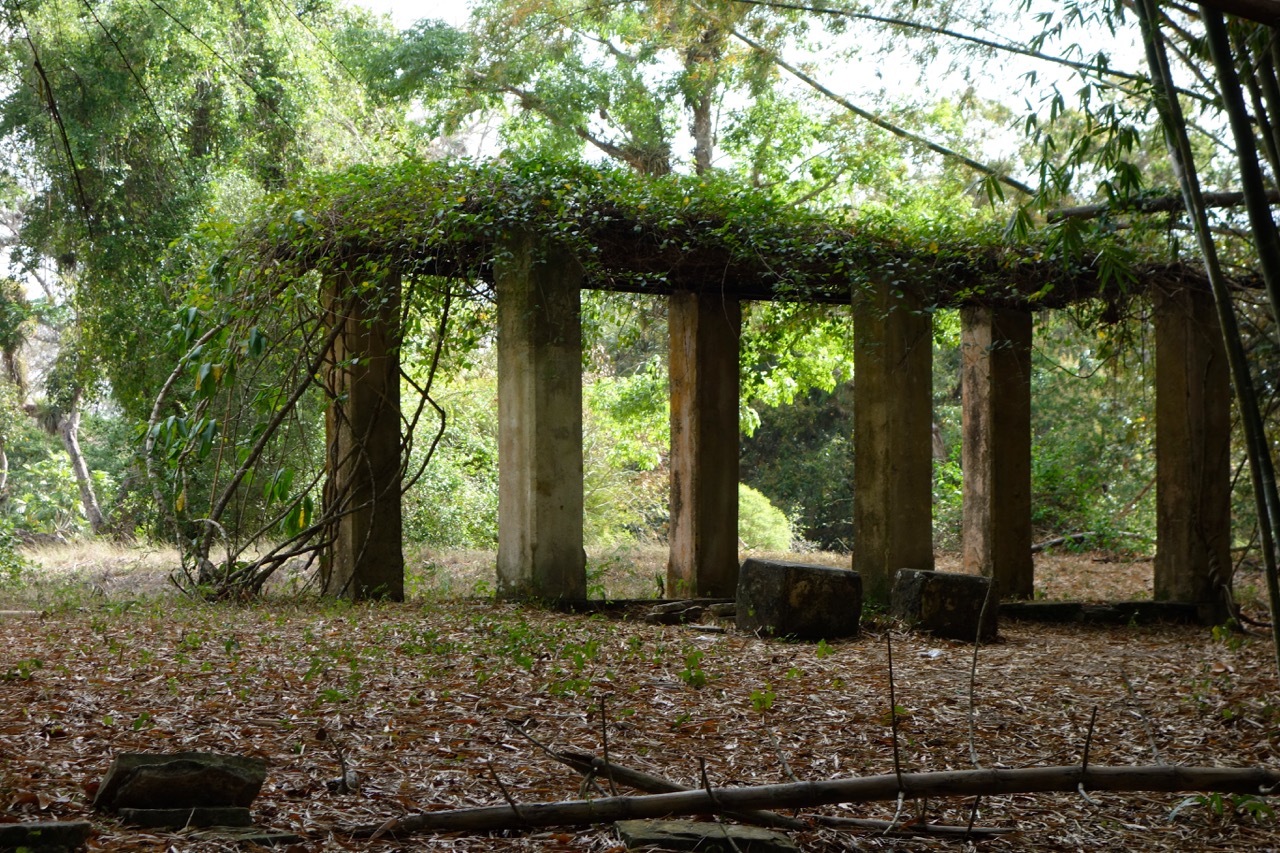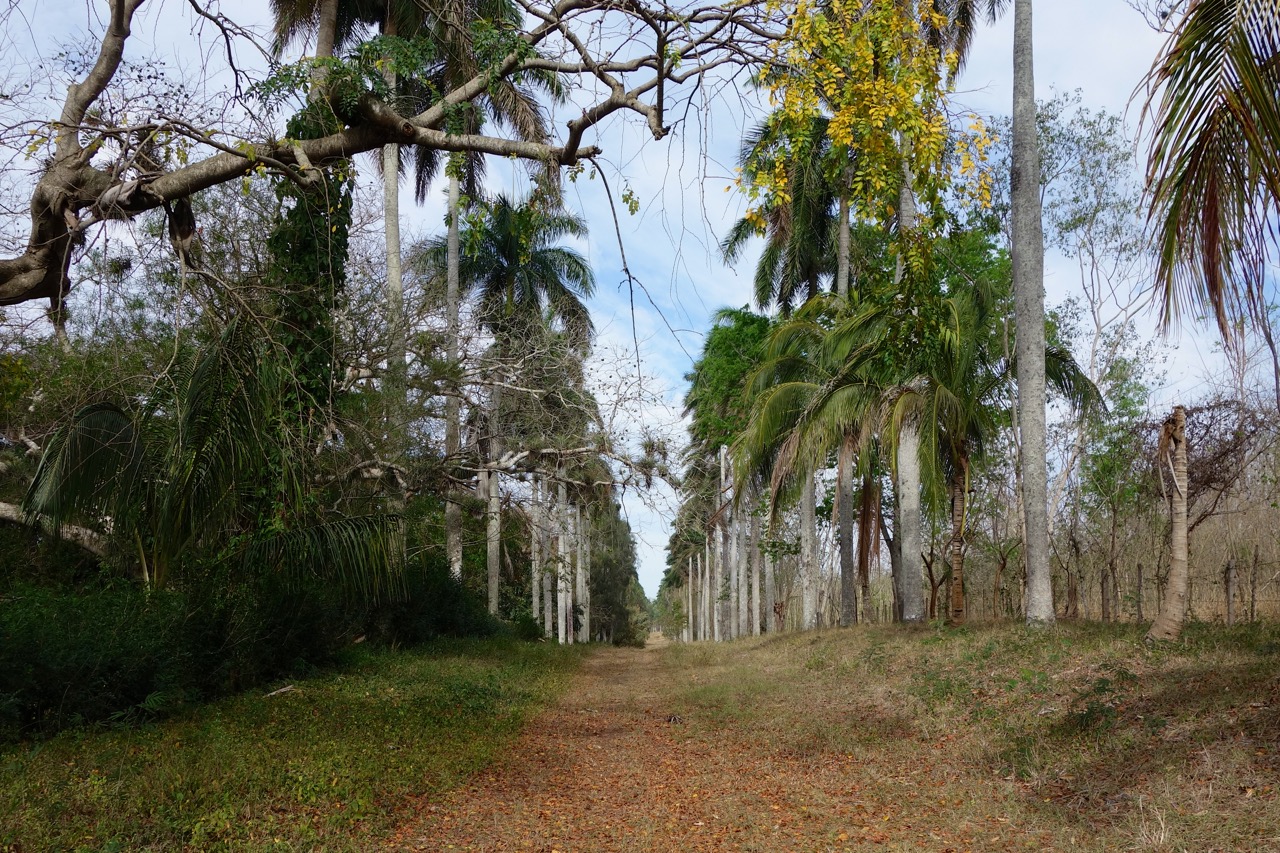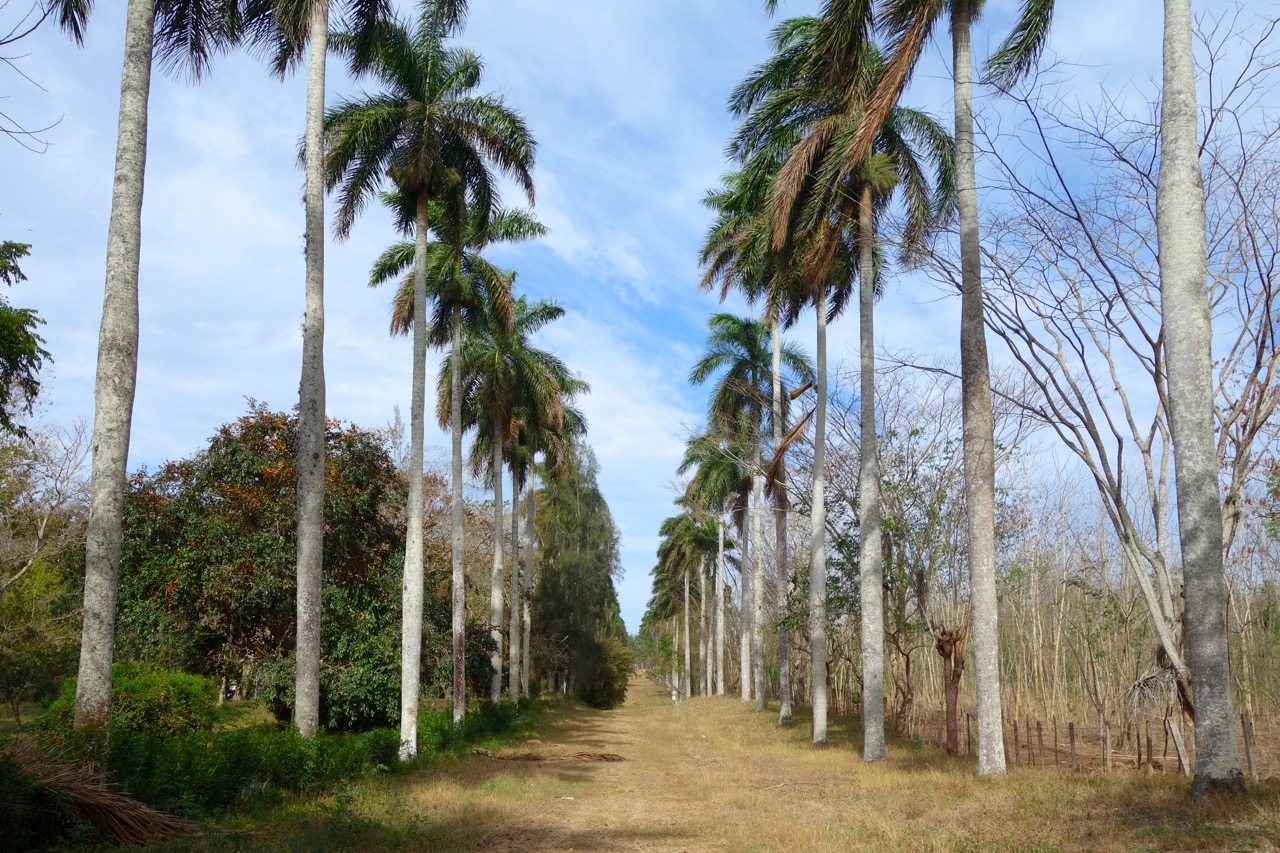With the recent passing of Fidel Castro, Cuba is back in the news – a good time to reflect on Cuba’s history. What better way to explore this than through a garden - the Cienfuegos Botanical Garden.
Set near the southern coast of Cuba, the Garden is about 45 minutes outside of the town of Cienfuegos.
Several of the Garden’s formal features grabbed my attention. An abandoned pergola sat below a stand of bamboo that looked like it was about to swallow the structure at any moment. A grand allee of palms, not part of the tour, seemed to go on and on - adding perspective to the space. The allee was popular in Europe in the 1600-1700’s. It took a bit longer to come to the Americas where it was more commonly used in the 1800’s. The only other time I have seen this French formal design element executed with tropical plants was at the Jardim Botanico - Rio de Janeiro’s Botanic Garden, established in 1808.
The current visitor's center, offices, and garden staff quarters. The palm allee is located behind this cluster of buildings. It is not on the official tour.
Wanting to understand the early days of this garden, I searched for and found several wonderful papers. Dan Hazen, Harvard University’s librarian for Latin America, Spain, and Portugal, provided important context. “[The town of] Cienfuegos was founded in 1819, 300 years after Spain first colonized Cuba. Sugar, then the dominant cash crop, was traded by local and foreign merchant firms including Boston's E. Atkins & Company. Edwin F. Atkins, first visited Cuba in the 1860s in order to master the family trade.”
Atkins moved to Cuba in the 1880’s, and built one of the island’s most productive sugar businesses - the Soledad Sugar Company. Given the lack of stability on the island under Spanish rule, Atkins championed independence for Cuba. He later supported US intervention, though neither of these brought security.
Seeking to further improve sugar cane output, Atkins partnered with Harvard University to “compile a bibliography on sugarcane and funded a ‘traveling fellowship in economic botany,’ …to conduct research that would improve the island’s cane production.” Work focused on developing disease resistant and more productive strains. Harvard called Atkins’ place the “Experimental Garden in Cuba.”
A hand-painted sign leads to the palm garden.
In 1919, after 20 years of project work, Atkins endowed the Garden and expanded it from 10 to 80 acres. Under its first director, Robert Grey, the mission grew. The Garden began to collect and study tropical plants from around the world. “Wartime appeals from Washington led to experiments with rubber trees. Research on tropical food crops reflected Atkins’ initial wish that the Gardens address the island’s general welfare.”
By the 1950’s, the Garden held summer courses and became a tourist destination.
Palms have been a central focus for the garden. Today the Garden “houses 280 different palms (purportedly the greatest variety in one place anywhere in the world).”
These formal garden elements - the allee of palm trees and pergola - remind us of the garden under Atkins and Harvard management and a time when formal garden design was more popular. As originally intended, the allee would have been a grand entrance – a stunning combination of local species and formal European design and the pergola would have been a special destination in the garden.
Fidel Castro took power in the 1959 Cuban revolution. Castro nationalized factories and plantations. Under the Agrarian Reform Act, foreign property ownership was forbidden.
I would never have predicted what would happen to this garden under Castro. Stay tuned for more research. In the meantime, follow the Cienfuegos Botanical Garden on facebook.
The garden is famous today for having the largest collection of palms in the world thanks to work started by Robert Grey, the Garden's first director.

